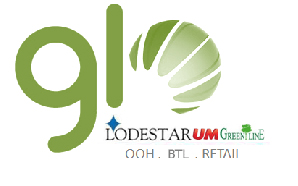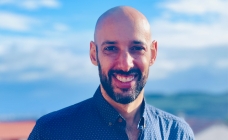Home » Viewpoints » A GLO-rious journey for four years
A GLO-rious journey for four years
By M4G Bureau - December 08, 2014
Raminder Singh, MD, GLO OOH Media turned a media-owning firm into a 360 degree solution company. He shares with Outdoor Asia, the progress of the company while pointing out industry's challenges, opportunities and the way forward.
 Undoubtedly, there are miscellaneous opportunities available in the OOH medium. And Raminder Singh, MD, GLO OOH Media seems to be monetising those available opportunities strategically. He turned a media-owning firm into a 360 degree solution company, which involved roping in big accounts including Microsoft, MasterCard, Coca-Cola and BMW, hiring talent from big agencies and now working towards getting metrics to provide transparency. In conversation with Bhawana Anand, Raminder shares the progress of the company while pointing out industry's challenges, opportunities and the way forward. Edited excerpts of the interview.
Undoubtedly, there are miscellaneous opportunities available in the OOH medium. And Raminder Singh, MD, GLO OOH Media seems to be monetising those available opportunities strategically. He turned a media-owning firm into a 360 degree solution company, which involved roping in big accounts including Microsoft, MasterCard, Coca-Cola and BMW, hiring talent from big agencies and now working towards getting metrics to provide transparency. In conversation with Bhawana Anand, Raminder shares the progress of the company while pointing out industry's challenges, opportunities and the way forward. Edited excerpts of the interview. GLO has been in the OOH business for over four years now. How do you see your firm's growth and development?'
These four years have been great for us. We came from a vendor background and worked with various big agencies like Ogilvy & Primesite to name a few. We realised where the shortfalls are and where the agencies aren't able to deliver. I always felt that there is a market and opportunity for a 360 degree agency, which not only has its own media but can also offer media buying services. And when you have your own media then you tend to get better media deals, on better rates from other vendors. Our experiences help us in understanding other media owners and get better deals for our clients. We know when the peak season is, when the inventory is vacant, when they are willing to give FOC, how a pricing works and important markets to work on. Therefore, it gives us great insight in picking up the best sites and best rates from other vendors.
Additionally since I have worked as a copy-writer, film maker with lot of agencies, we have brought various creative changes within the company. We have won many awards for PSI, B2B wards for Microsoft and also got great accounts like Coca-Cola, MasterCard, HCL, Microsoft, Amul, BMW and other global accounts. We have done rural marketing for PFI & PSI, activations at airports and even ventured into interiors of the country with nukkad nataks. Various agencies claim that they provide complete solution and outsource, but we are the only agency that does everything on its own.
It has been a fabulous experience working with Lodestar, since they are the most creative and awarded agencies. Since I started my career with ULKA, it was like coming back home. They are transparent and have system in place which is why it is the second largest agency in the country.
You work with some of the best known brands like Coca-Cola, Microsoft and others. How do you meet the diverse OOH needs of large clients? What are the challenges in working with them?
All agencies are equipped to work across all categories of brands. There is no agency which is dedicated towards only one category. It's not much of a challenge because the required skills are same, where the required amount of creativity and measurability is the same for all clients. We need to suffice the requirements of each client separately but still there is huge synergy what we do for different clients. For instance, Microsoft can also align with Coca-Cola for joint promotion because their TG overlap in many ways. Also there is a synergy because we are trying to achieve effectiveness, creativity and measurability for each brand.
GLO has a strong presence in both metros and Tier 1 cities. In your view, is OOH business growing in both these segments?
There is a tremendous growth in OOH as people are more mobile these days. Most importantly, Tier II & III cities have shown the maximum growth because rural income is growing, while they are getting exposed to brands and lifestyle. OOH is going to grow because earlier budgets were focused only on metros like Delhi and Mumbai, which used to take 60 per cent of budgets but now that has changed as brands are penetrating into deeper markets. Wherever there is a growth, there will advertising and for local advertising, there will be outdoor. Also municipal bodies in many cities need funds. They get funds from company like ours to set infrastructure, so this will be a big help in expanding the outdoor medium.
Definitely outdoor in smaller cities are not inline but big vendors are going to smaller town like Prakash Arts in Andhra Pradesh and Chitra Arts in Gujarat. Large vendors who were metro-centric are now going into smaller towns because they see the opportunity in these places. With this, the industry has become more structured and centralised, where everybody has to work within the strong policies put down by the municipal bodies. All these developments help in getting a clean and transparent outdoor industry.
Various new opportunities are coming up such as train wraps, station and stadium naming rights. Municipal bodies are approaching us to fulfill their requirement of revenues. There is a lot of measurability coming into it; while we are taking an exercise to work on traffic counts and measurability of sites so that we can deliver some data to our client.
 What are the expectations from brands who advertise in Tier II & III cities?
What are the expectations from brands who advertise in Tier II & III cities?Brands are willing to invest in long-term relationships with OOH mediums such as street furniture for a period of three to five years. We are now noticing that many brands want to develop iconic sites and landmarks in these cities.
In the OOH space, are brands content with advertising on hoardings and billboards or they are looking for new and innovative media as well. In this regard, do you see any growth prospects for digital OOH in India?
Clients like Coca-Cola, BMW and HCL are always looking for newer opportunities which outstanding. They look for newer formats, elements, opportunities which are different and are always receptive towards them. For instance, we have taken elements which includes activation cum outdoor which no other client would take. We did the biggest branding at Kumbh Mela, which included a huge space and we created our own media. Our campaign was the most visible campaign out there.
At an industry level, there are many challenges that OOH firms face, such as, inconsistency in the policies of civic bodies, cluttered OOH environment, and the like. As an integral part of DOAA, could you mention some of the key industry concerns that the body is addressing?
There are a lot of issues which are being discussed such as increase in illegal media and unstructured media too. Another important factor which should be reflected is that the media owners who are encouraging these practices aren't from healthy background. Therefore, they are bringing their own set of skills which aren't healthy for the industry and are kind of transposing the laws. But DOAA is taking a strong stand and putting efforts that media has to be regularised, transparent and legal. Strong steps have been taken to beat down this element which can mess up the entire industry.
What steps would you advocate for the OOH industry to successfully draw more brands to advertise through this media?
I believe that facts & figures, measurability, research and geo-profiling of sites are essential to draw more brands towards OOH. Additionally, a healthy interface with municipal bodies is required in order to have aesthetic structural street furniture and not just go bizarre. We should have clean city policies, where outdoor advertising merges with the city's landscape and not become eyesore. There are few steps taken by IOAA and DOAA to do this.
Where do you see GLO three years from now?
We are expanding by getting more people on board. The company is looking at getting more involved in rural activation and retail. While we are acquiring new projects, we are hiring talent with different skill-sets and capabilities. Also we are strengthening our relationship with Lodestar, which has been a great working experience since the company has a responsive and progressive bunch of people. We enjoy our work because we do it with same vision; and Lodestar is a transparent company, since they are the part of IPG group, which has the strongest regulatory guidelines for their business. So we also work under very strict policies.

Stay on top of OOH media trends
Advertisement







